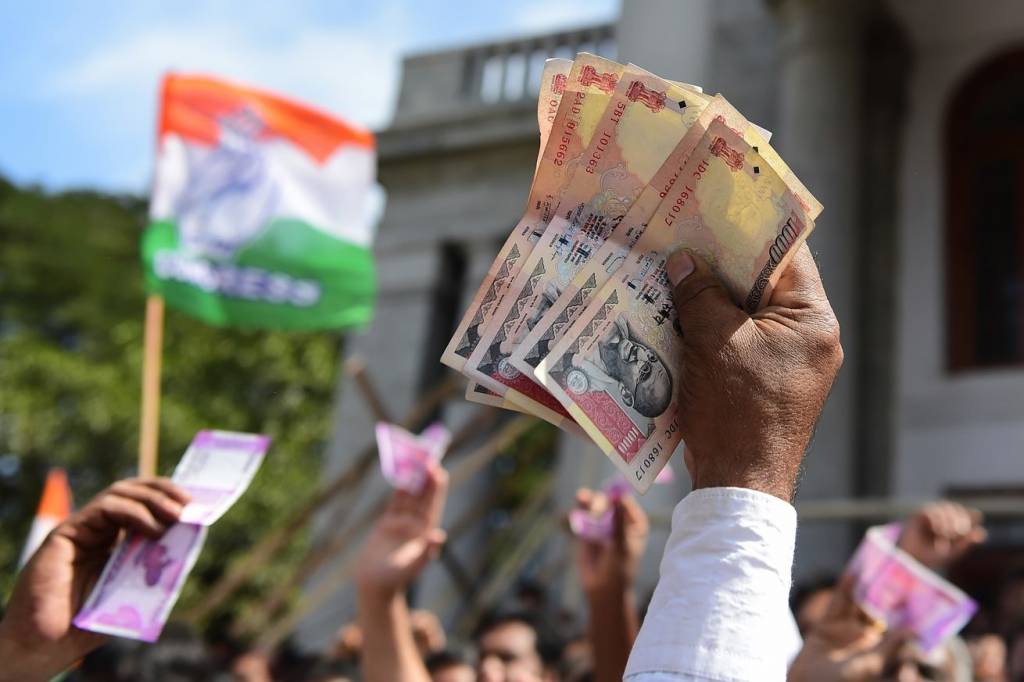As an economic recession looms amidst the Covid-19 pandemic, businesses in Asia continue to tighten their credit management processes in order to minimize debt risks. TFG’s Deepesh Patel heard from Andreas Tesch, Chief Market Officer of Atradius and former President of ICISA.

Trade credit insurance in Asia – Overview
Deepesh Patel (DP): Can you give us an overview of the payments and trade credit insurance market in Asia, in particular, how it fares with Europe and the Americas?
Andreas Tesch (AT): Generally speaking the situation in Asia is relatively under control with the exception of India. The epidemic started in China but we have seen very little adverse news coming out of China in terms of late payments. Same can be said for N-Asia (Hong Kong, Taiwan, S-Korea and Macau). Within APAC the biggest concern is SE Asia where we do see an uptick in payment defaults. Biggest deterioration we see is in Malaysia, Singapore and Indonesia. Sectors that are most affected are construction in Malaysia and Singapore as construction works have been halted for an extended period. The food and beverage sectors in these countries are also heavily affected as restaurants and pubs have been operating at low capacity or were temporarily closed during the lockdowns. All sectors associated with travel are also suffering.
In Europe, payment defaults have risen in Spain and the UK. In other countries, they have been reasonably stable thus far, but we are seeing indications that they are inching up. Hospitality, leisure and travel have been hit the hardest thus far, however, all industries are being affected. Government support schemes have played a positive role in helping support many European economies.
We are also seeing an increase in payment defaults in the USA. Lockdowns are having a notable impact on the economy. Like in many other markets around the world, hospitality, leisure and travel have been hit the hardest, but all industries are affected. Relaxation of lockdown restrictions seem to be having a negative effect on the economy. However, improvement being experienced in some states may offset other areas where new Covid-19 cases are increasing rapidly.

Emerging economies in Asia
DP: What were the key take homes from the survey?
AT: The percentage of B2B businesses offering trade credit as a sales tool varies from country to country throughout Asia. This is governed in large part by cultural attitudes towards credit and local responses to the economic challenges posed by the pandemic-driven threat of global recession. However, one unifying approach found in the survey results of every country polled is the commitment to tighter credit management. With stormy times ahead, featuring an increased risk of bad debts and insolvencies, the vast majority of businesses throughout the region expressed their dedication to using one or more credit management tools to protect their accounts receivable.
The credit management processes described by the businesses interviewed for the survey range from a reduction of single-buyer concentrations and demands for cash payments, to requests for letters of credit, payment guarantees, self-insurance and the adoption of credit insurance. Many respondents reported using a combination of tools. Bank guarantees and letters of credit are frequently used by businesses in the United Arab Emirates, for example, whereas in Hong Kong, businesses expressed an increasing interest in credit insurance as the most comprehensive tool for securing accounts receivable while promoting growth.
Some businesses expressed optimism underpinned by government support packages, which was especially evident in the survey results of Singapore. A sizeable proportion of businesses across the region expect dependence on bank finance to increase in the coming months.
Regardless of the level of governmental support or cultural approaches to credit and perceived risk, all businesses throughout the region would benefit from coherent credit management strategies with regular reviews and payment guarantee protections.
DP: China dominates Asian trade, particularly in terms of domestic B2B payment transactions. What are the key trends for the rest of the year, and has COVID changed this?
AT:
- It was very difficult for businesses, particularly in the first quarter, i.e. -6.8% of GDP growth. Negative GDP growth for the first time in Chinese economy since 1992. Lockdowns have resulted in lower turnover and more payment defaults.
- Late payments most frequently caused by liquidity shortages.
- Recently, China’s domestic economy has shown concrete signs of recovery from the downward impact of the pandemic.
- B2B customers are being given longer payment terms
- Demand for trade credit insurance is expected to increase especially in domestic B2B transactions as awareness of credit management and risk mitigation has increased.
- This year’s Atradius Payment Practice Barometer indicates that the majority of respondents in China plan to strengthen their internal credit controls and debt collection processes
ARTICLE: Disruption in Global Supply Chains: Can Emerging Economies in Asia Play a Bigger Role?

Hong Kong as China’s finance hub – growing risk?
DP: Given the current geopolitical situation, and the fact that Hong Kong remains a financial hub for China, what does this mean for business finance?
AT: Hong Kong remains not only a financial hub for China, but also plays a crucial role in the global financial system.
The business risk is growing and cost of obtaining financing for business is also expected to go up as tensions build over the current geopolitical situation. The geopolitical tension leads to uncertainty of the financing system in HK and growing risk of business finance.

India – Real economy impact on demonetization
DP: India remains a difficult market for businesses. What’s the short term trade finance market outlook for India and what’s expected for 2020?
AT: There is a fair degree of economic stress with the twin problems of lockdown and limited government support. The Covid-19 pandemic has exacerbated the situation as it comes on the back of government demonetization, which had already caused a great deal of stress in the economy. This has affected small and medium enterprises more adversely than others.
The recovery is expected to be slow and 2020 will see an increase in company bankruptcies especially start-ups and small enterprises. Cash stress will continue to remain in the short to medium term. Demand for trade credit insurance is expected to increase as the stressed situation prevails and there is a real threat of buyer defaults
Singapore – a silver lining post the recent casualties?
DP: Singapore probably has a higher perception of trade credit risk given the recent casualties in the commodity sector. What’s this meant for credit risk and management?
AT: The recent high profile casualties have highlighted the need for tighter credit risk management, customer due diligence and a more detailed understanding of trade transactions. Whilst some of the recent defaults contained an element of fraud and/or lack of original documentation, the defaults were a result of the political and economic environment creating a perfect storm with reduced commodity prices, weak demand and a collapse in the oil price. Without all or some elements, these companies may well have continued their operations successfully for some time, even with the underlying operational practices lacking in transparency and accuracy.
There is a silver lining in everything and for Singapore, the recent casualties emphasise the need to protect against the unexpected and unforeseen. It is also highlighting the necessity for transparency of financials as well as transactional and operational information. The need for transparency is also pushing the cultural boundaries of trust and relationships.
Awareness of and demand for trade credit insurance will likely increase as a result of the current economic climate and increased corporate defaults and insolvencies. We also expect to see the trend for financing platform start-ups slowing down as funding becomes more difficult and costly to obtain.
There is an expectation that obtaining financing will also be more challenging in certain trade sectors and more checks and balances will be adopted. This is not necessarily a bad thing, as for some years there has been excessive liquidity in the market pushing down prices and enabling excessive levels of corporate debt. Actively managing credit risk, protecting cash flow and ensuring a professional credit management framework and trade credit insurance coverage is in place, will enable companies to survive the difficult times as well as help them access the more stringent banking facilities.
The Monetary Authority of Singapore, together with major industry bodies, banks and trade finance professionals, are currently developing a set of best practices aimed at uplifting transparency and trust in commodity financing. These best practices will aim to strengthen banks’ lending standards and facilitate continued lending to trading companies.

The key COVID-related initiatives
DP: How has the trade credit market reacted to COVID19 in Asia as a whole, and has this reflected in EDEs in Asia too? Moreover, are insurers likely to pull back, and are governments likely to follow suite (of Europe) in terms of providing a backstop for underwriters in Asia in 2020 to ensure economic stability for corporates?
AT: There have been talks with governments in Singapore and Hong Kong to provide a government scheme but it looks unlikely that these talks will be successful. I can’t speak about the actions of our competitors but at Atradius we have been managing our portfolios and review actions in a customer centric way. Feedback from the market is that we have done an excellent job of managing this crisis together with our customers.


































